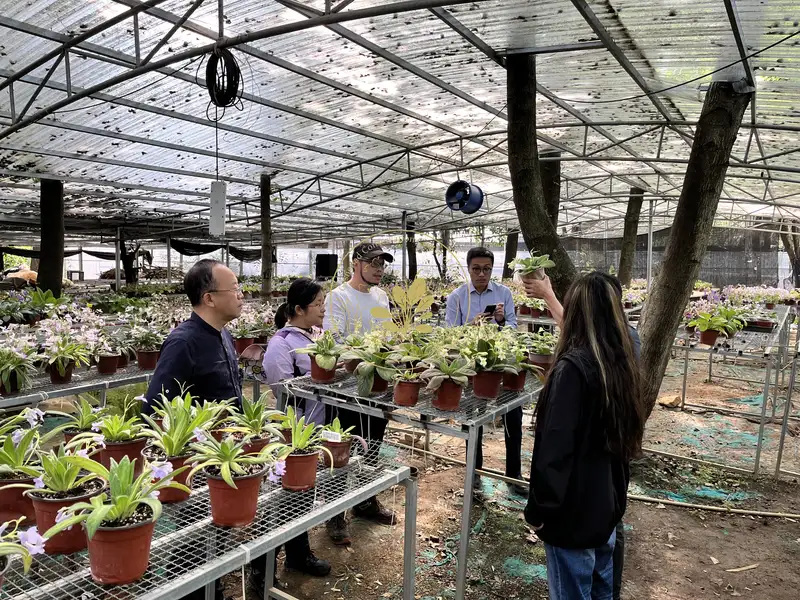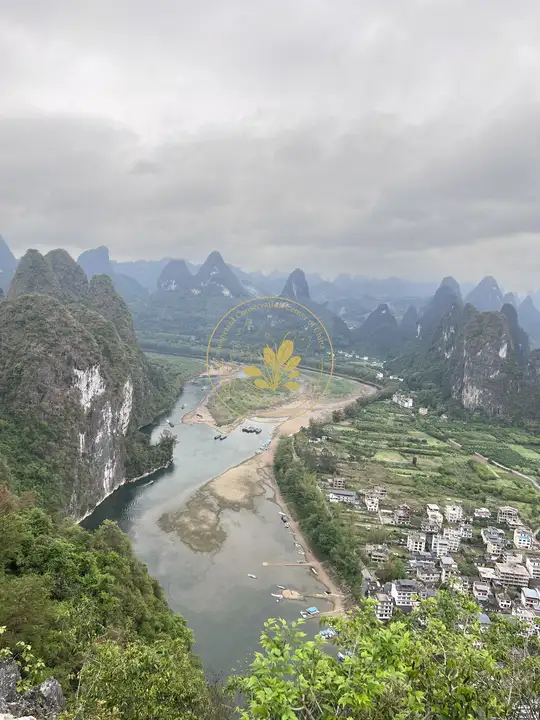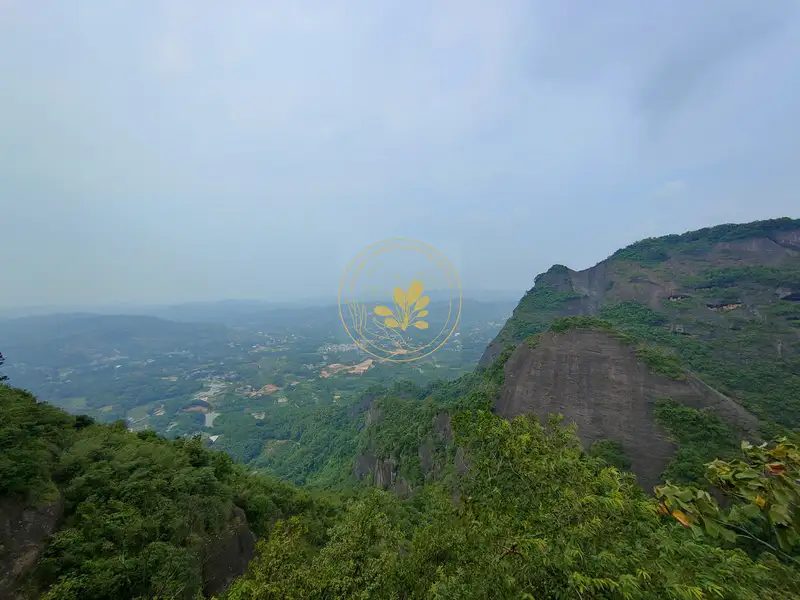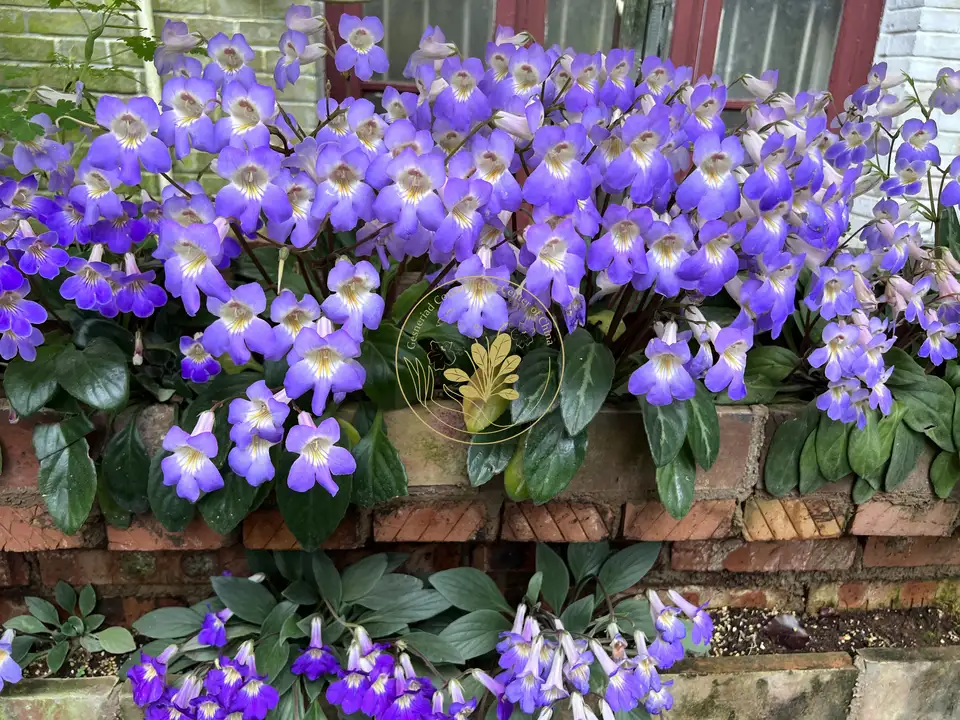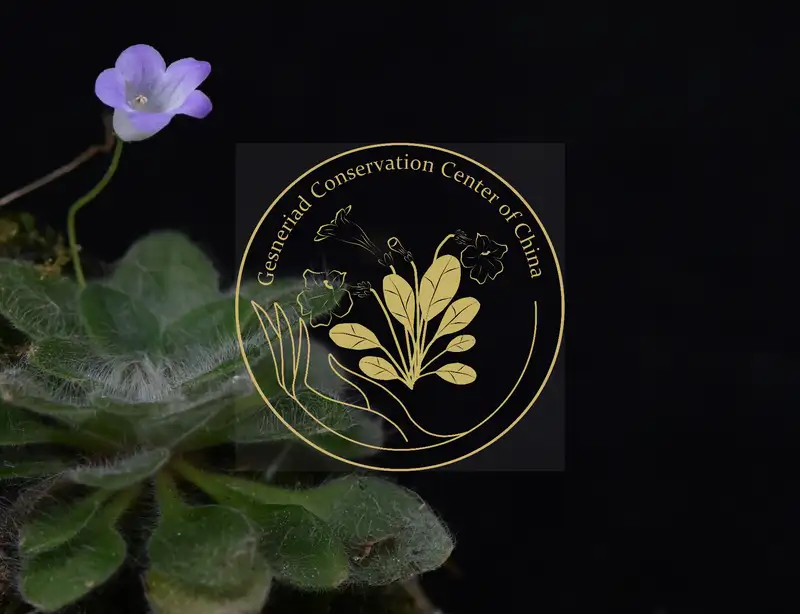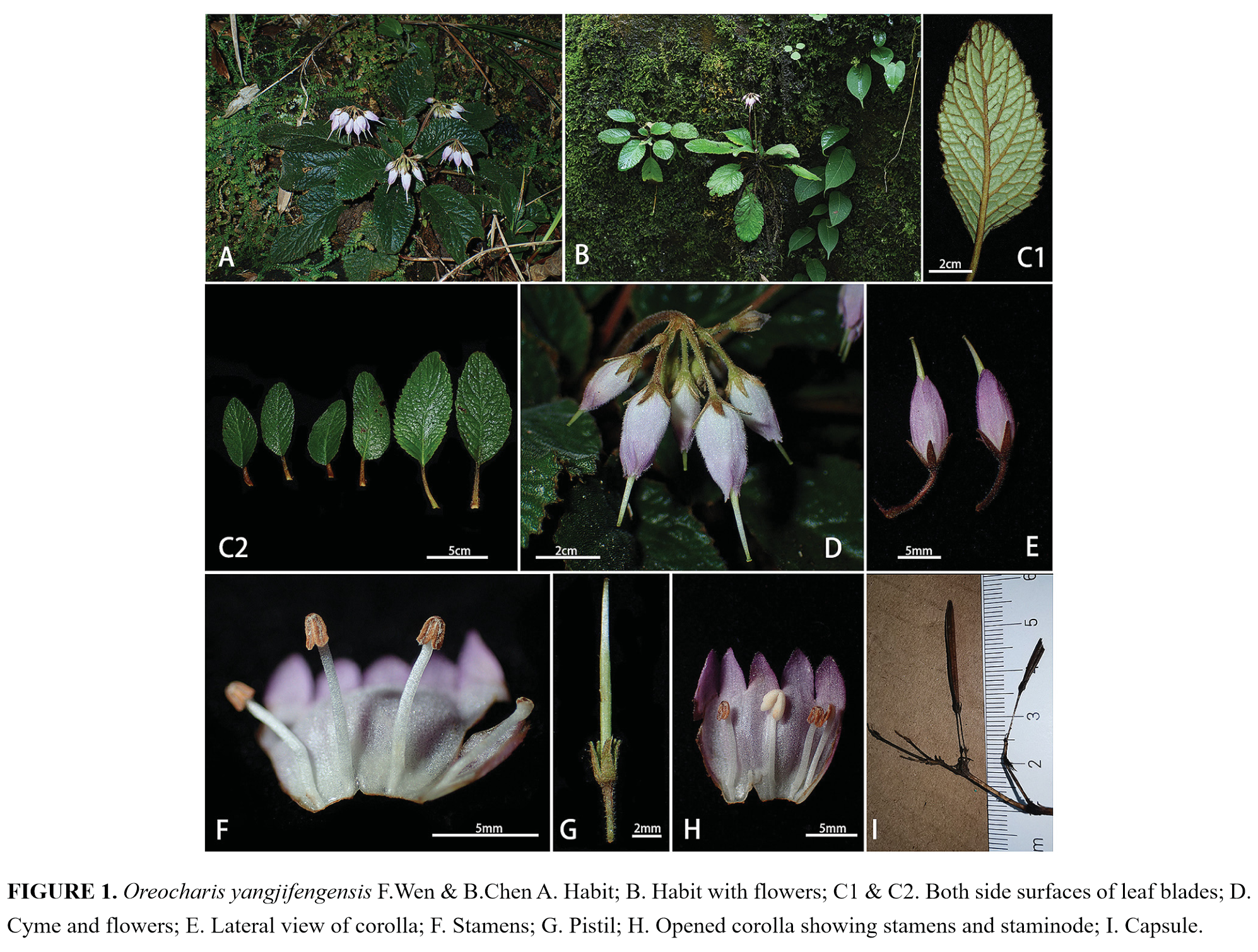No.5 RUI-LI ZHANG, LONG-FEI FU, SHU LI, YI-GANG WEI, STEPHEN MACIEJEWSKI, MICHAELLOFURNO & FANG WEN
Petrocodon asterocalyx, a new species of Gesneriaceae from Guangxi, China
Phytota 343(3):259-268.
ABSTRACT
Petrocodon asterocalyx F.Wen, Y.G.Wei & R.L.Zhang, a new species from the Danxia landform area in Guangxi, South China, is described and illustrated based on molecular and morphological data. The molecular evidence shows that the new species is recovered in a weakly supported clade (It explains that the systematic position of this new species is still pending). Within this clade, the new one is morphologically similar to P. hancei (Hemsl.) A.Weber & Mich.Möller and P. coriaceifolius (Y.G.Wei) Y.G.Wei & Mich.Möller, and it can be distinguished from the former by calyx lobes 20–40 × 2–3 mm, corolla 2.5–3.0 cm long, filaments sparsely erectly pubescent, anthers sparsely pubescent, staminodes 3, and stigmas 2; from latter by leaf blades rhombic-oblong or rhombic, base shallowly cuneate, margin crenulate to serrate, calyx lobes linear, 20–40 × 2–3 cm, and anthers 3.5–3.8 mm long, sparsely pubescent and elliptical.
Original article link: https://www.biotaxa.org/Phytotaxa/article/view/phytotaxa.343.3.6
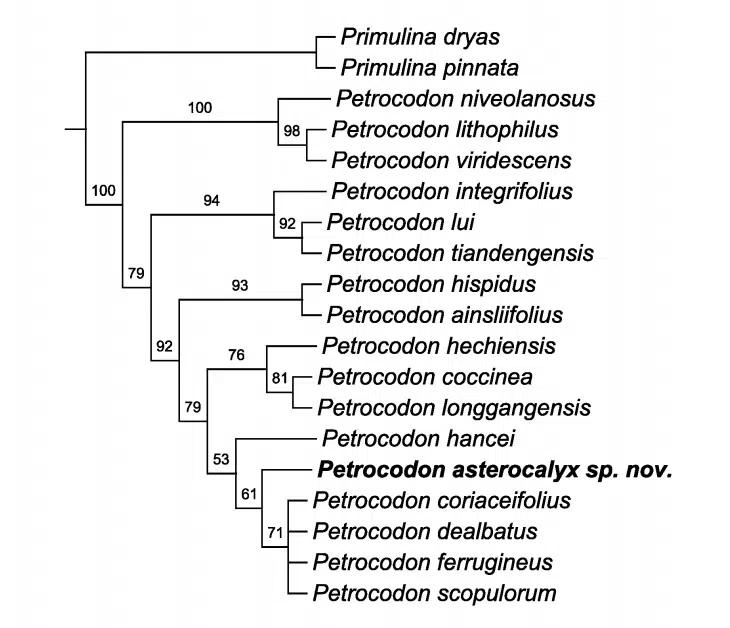
FIGURE 1 The strict consensus tree resulted from a Maximum-parsimony (MP) analysis based on combined trnL-F and ITS sequences of19 species. Bootstrap values >50% by MP analysis are given below branches. ※indicates the new species, Petrocodon asterocalyx.
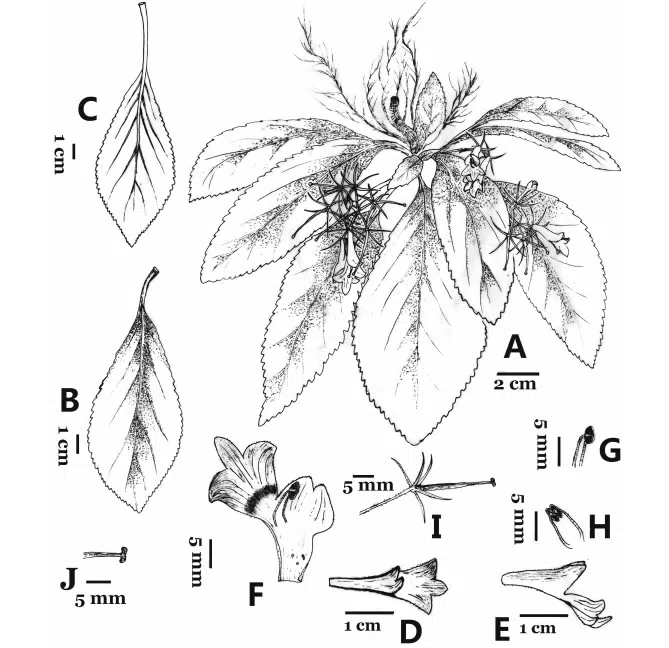
FIGURE 2 Petrocodon asterocalyx. (A) habitat, (B) the adaxial leaf, (C) the abaxial leaf blade, (D) top view of flower, (E) lateral view offlower, (F) opened corolla for showing stamens and staminodes, (G) lateral view of anthers, (H) opened anthers, (I) pistil, and (J) stigma(Drawn by Ms. Xuan Wen based on holotype, F. Wen WF120510).
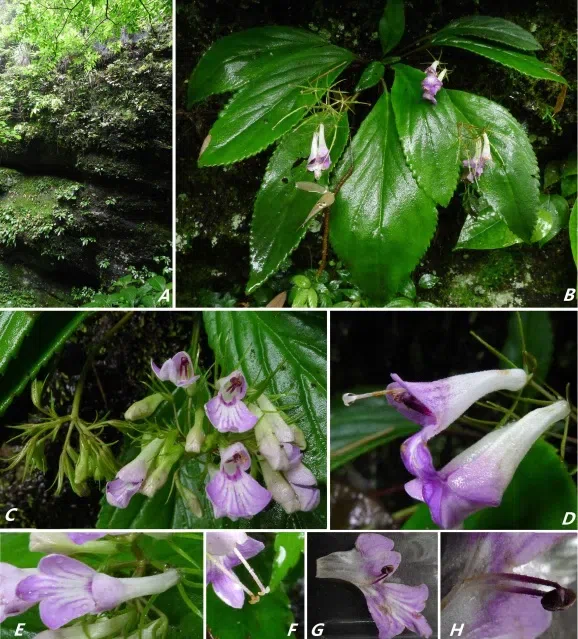
FIGURE 3 Petrocodon asterocalyx. (A) habitat, (B) habit, (C) cymes, (D) the lateral view of flower and bud, (E) top view of flower, (F)stigma, (G) opened corolla, and (H) anthers and filaments.
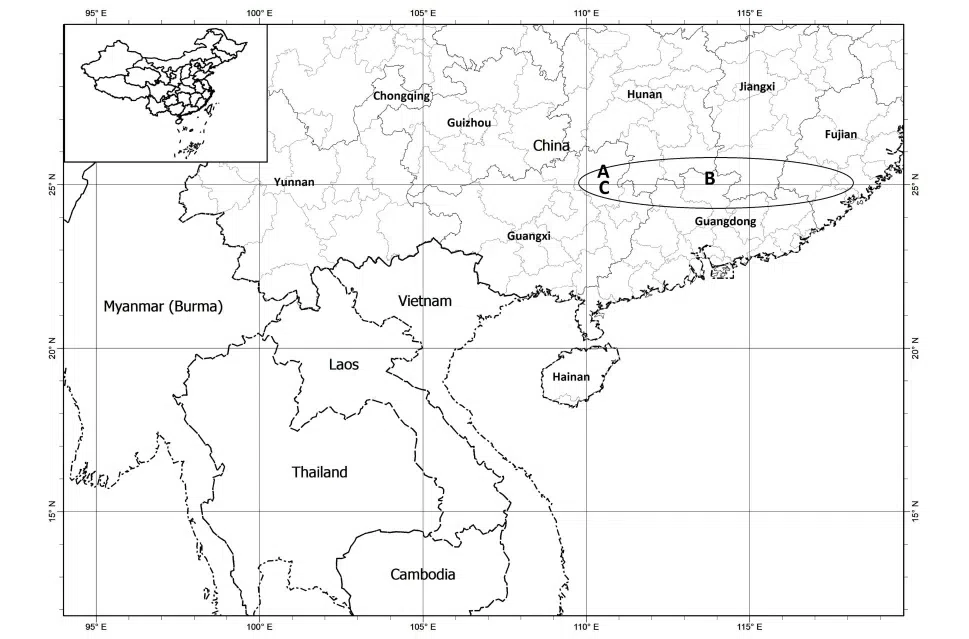
FIGURE 4 Distribution of Petrocodon asterocalyx (A) and its morphologically similar species, P. hancei (B, elliptical area) and relativeP. coriaceifolius (C)
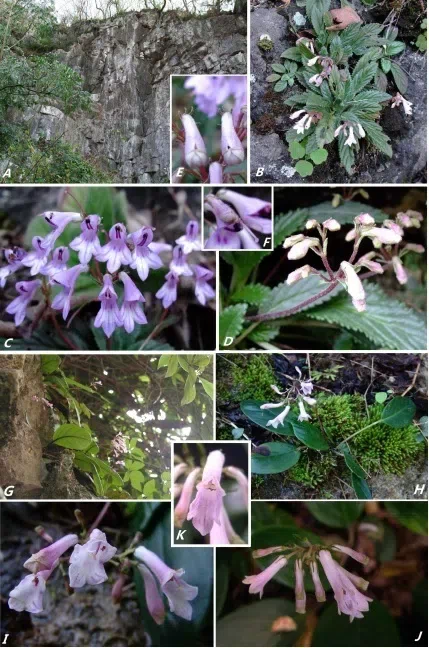
FIGURE 5 The morphological and molecular related species, Petrocodon hancei and P. coriaceifolius. (A–F) P. hancei: (A) habitat, (B)habit, (C) cymes and frontal view of flowers, (D) cymes and buds, (E) calyx lobes and buds, and (F) stigma; (G–K) P. coriaceifolius: (G)habitat, (H) habit and cyme, (I) frontal and lateral view of flowers, (J) top view of flowers and buds, and (K) stigma.



